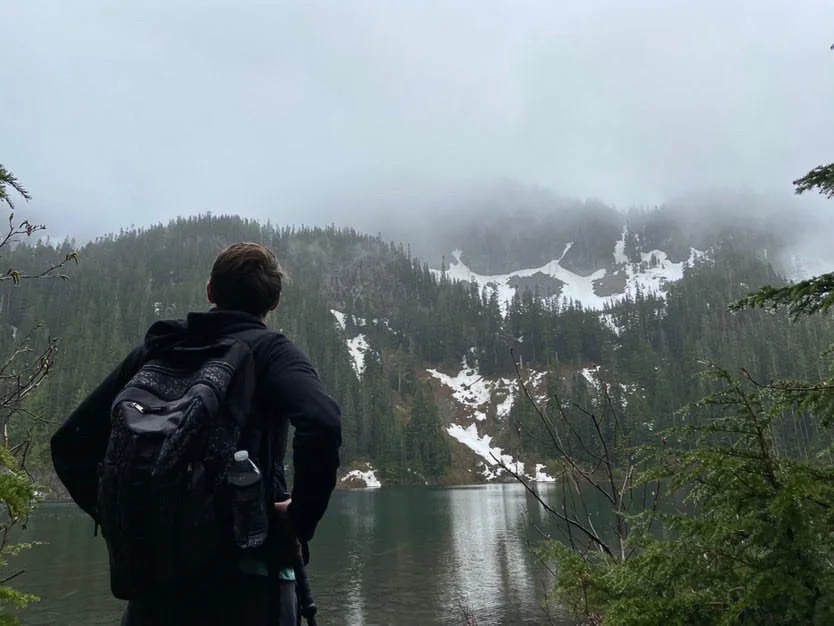Beginner's Guide to Winter Hiking in Washington
Words and Photos by Jared Leingang
Winter is here and that means cold nights, slippery roads, and frozen lakes. Even with the snow, Washington is still beautiful during the winter. It’s hard to top seeing the mountains dusted with snow, hearing the snow crunch with every step, and warming up with a hot chocolate after a hike. In today’s article, you’ll learn what you need to be safe during a basic winter hike, some locations to avoid, and some resources to ensure you have the safest experience possible.
Safety
The first thing you should do before you even get into your car is to check the weather conditions for the hike you are wanting to do. Avalanches can strike even the most prepared winter hiker. Never test mother nature. Before going out on a snowy trail, check the Northwest Avalanche Center online to determine local mountain weather and avalanche conditions. And if you are heading toward Snoqualmie Pass on I-90, check WS DOT to see the conditions of the road. You could even call a rangers station in the area you are going to get a full breakdown of the conditions.
Whenever you head out to a trail, consider also downloading a topography map of the hike. Plenty of apps have that feature like AllTrails and Gaia to name a few. Being able to access a map when you have no internet can be a lifesaver.
If you like to venture solo, it’s even more important to let a friend or family member know your exact hike itinerary. Where are you going, what are you bringing/wearing, and when do you expect to be back? If something does go wrong on the trail, this can be the difference if search and rescue crews are out looking for you.
Also, always be present and aware of your surroundings. Trails are covered with snow so you could get lost easily if you aren't following a map and be careful when next to logs and boulders as snow often covers soft spots that you could sink into.
Know Your Area
Some locations are just not worth the risk in the winter. Making sure you are knowledgeable and familiar with high-risk locations is imperative. It’s very common for easy summer hikes to turn deadly in winter. For example, these popular hikes are best left for the spring/summer as they are high avalanche risks; Snow Lake, Granite Mountain, Lake 22, Colchuck Lake, and others. You can view which regions are avalanche risks here.
Gear
The 10 Essentials list should be carried any time you hike. They include a topographic map and compass, hydration, extra food, extra clothing, a fire starter, a first-aid kit, a pocket knife, a flashlight, sun protection, and an emergency shelter. In winter it may benefit you to add a couple more items to that list like a flashlight because the days are shorter, a portable shovel in case you need to dig your vehicle or yourself out of the snow, and a satellite communicator like a Garmin InReach. Depending on where you are hiking and the conditions, you may need to bring snowshoes or microspikes/crampons. Always make sure to have plenty of water and food as well. Be prepared for any situation. You'd rather have it and not need it, then need it and not have it!
Limits
When braving the cold conditions, the most important thing is to know your limits and your body. If you are tiring or feel that the area you are in is turning unsafe, consider turning back. There is no shame in turning around early, or canceling a hike if the weather looks bad. The hike isn’t going to disappear and you can always go back when conditions are more optimal. Even the most experienced hikers and climbers recognize when it’s just not worth the risk.
These tips are a nice starting point to understand the risks and preparation needed to do basic winter hikes and experience the beauty of winter in Washington but always do your own research and do what you feel is the safest decision for you. Once you feel like you are ready to start winter hiking you can head to Snoqualmie and do the lower elevation hikes, take a day trip to Olympic National Park, or find a small hike in between. No matter your experience level, there is a winter hike that’s perfect for you. You just have to get out and find it.





